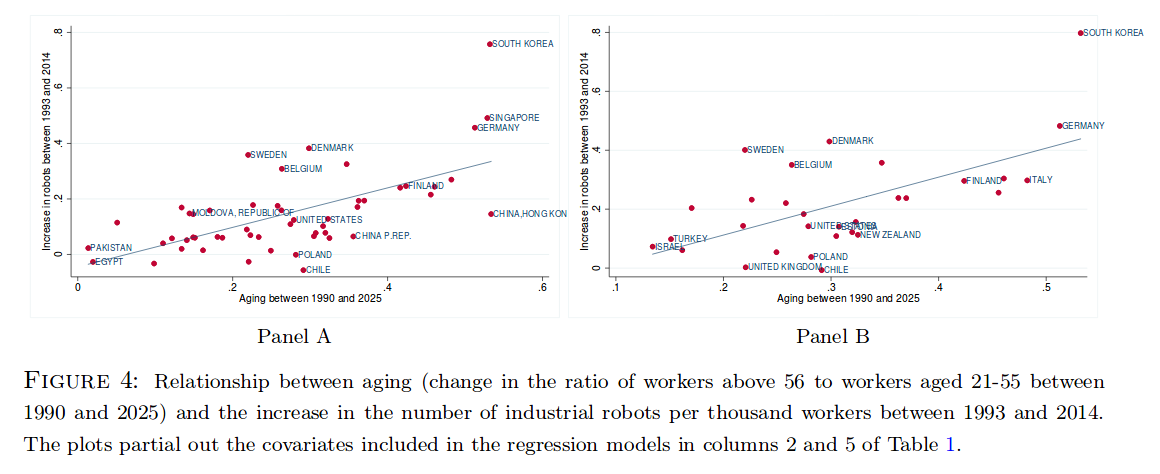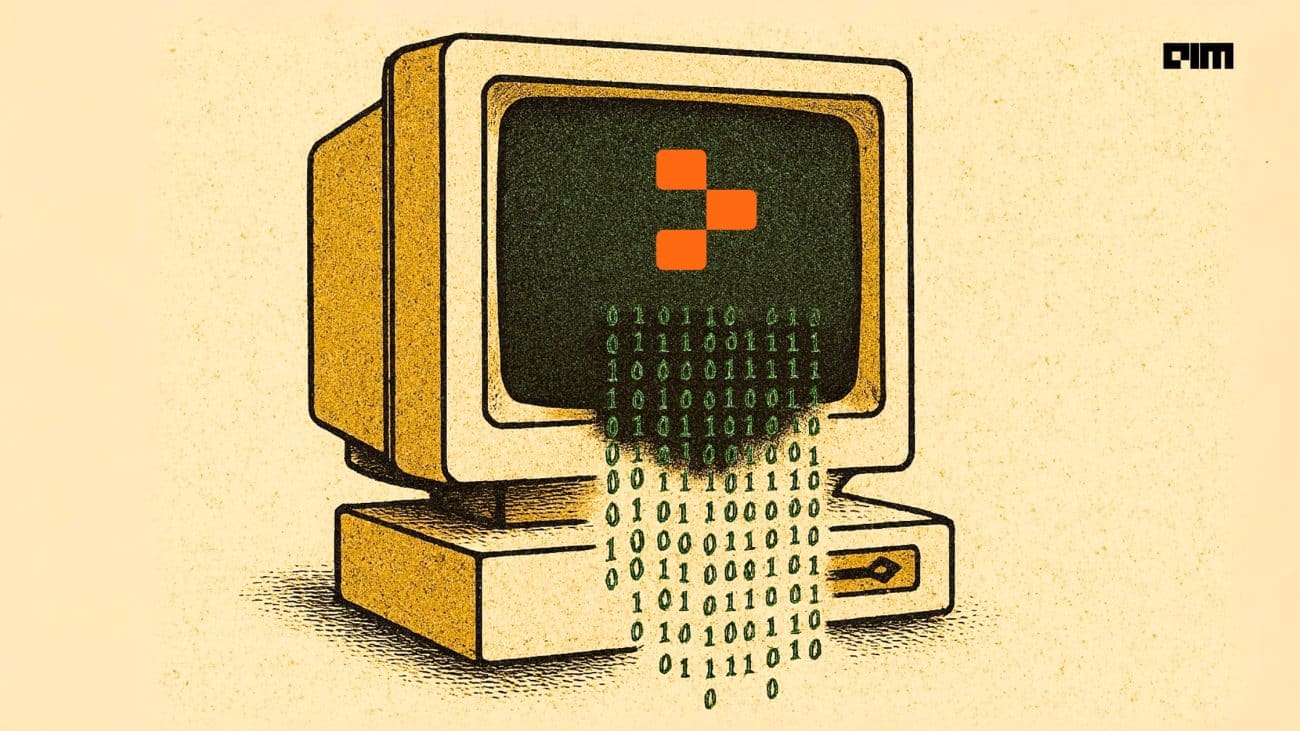Last Week in AI News #19
Supposedly full self driving, automation woes, AI music, and more!

Image credit: From the paper Demographics and Automation
Mini Briefs
Robots threaten middle-aged workers the most (that’s anyone over 21)
As extensively covered in our article “Job loss due to AI — How bad is it going to be?”, the last decade has seen much economic investigation of the effects of automation and AI on jobs. This article highlights three such recent papers by economists Daron Acemoglu of MIT and Pascual Restrepo of Boston University. Despite the ominous title, the actual finding of the relevant first paper is not that middle-aged workers lose their jobs to automation but that the rate of automation is higher in countries with more aging populations; in other words, if there is a shortage of middle-aged workers the relevant industries will invest more in robotics. The second paper formalizes the idea of “Task Content of Production”, which build on several prior works that analyze the impact of automation based on the range of tasks (as opposed to whole jobs) that new technology can complete as well as new tasks it creates for humans to do. As we said in our piece, this framework then implies automation does not inherently mean net job losses, but it does mean that specific actions can and should be taken to ensure the disruptions caused by automation are counterbalanced by new jobs:
“Our framework has clear implications for the future of work too. Our evidence and conceptual approach support neither the claims that the end of human work is imminent nor the presumption that technological change will always and everywhere be favorable to labor. Rather, it suggests that if the origin of productivity growth in the future continues to be automation, the relative standing of labor, together with the task content of production, will decline. The creation of new tasks and other technologies raising the labor intensity of production and the labor share are vital for continued wage growth commensurate with productivity growth. Whether such technologies will be forthcoming depends not just on our innovation capabilities but also on the supply of different skills, demographic changes, labor market institutions, tax and R&D policies of governments, market competition, corporate strategies and the ecosystem of innovative clusters.”
The final paper, released concurrently with the second, essentially raises the concern that private industry may primarily be incentivized to develop the “wrong kind of AI” which does not create many new tasks or jobs. Overall, these papers confirm that mindful actions need to be taken in expectation of future automation to ensure those workers who are affected can smoothly transition to new roles or jobs.
Here are Elon Musk’s wildest predictions about Tesla’s self-driving cars
Tesla hosted a nearly 4 hour “autonomy day” last Monday to showcase its autonomous driving technology, which included several bold claims such as that Tesla developed “the best chip in the world” for autonomous driving, that it’s technology will develop to the point of “Fully self driving” by 2020, and that these fully autonomous cars will be part of a one-million sized fleet in Tesla’s new ride-hailing app – “We will have more than one million robotaxis on the road … “A year from now, we’ll have over a million cars with full self-driving, software… everything.” It also released a sped up video titled “Full Self-Driving” which showed a Tesla car driving itself from a starting point to a destination without any interaction from the drivier.
This presentation and the above video impressed many, but it is worth noting that autonomous driving has been close to done for years and the last challenges remaining are the most challenging. Multiple companies have released similar short reels demonstrating the capabilities of their technology, and none claim to have achieved “full self driving.” And to further justify skepticism about any big promises, the autonomy day was timed just days before a disappointing earning reports that has hit Tesla’s Stock hard. Tesla’s progress with its autonomous driving technology is certainly impressive and worthy of praise, but we recommend staying skeptical of any predictions as to “full self driving” in the near future.
AI Surpasses Neuroscientists in Spotting Neurons
A new paper from earlier this month by Biomedical scientists at Duke University claimed to have developed an algorithm that “is the first to be as accurate as human experts in segmenting active and overlapping neurons.” But, fear not, this is not a threat to neuroscientists’ jobs; rather, it should [enable[(https://www.genengnews.com/news/ai-technique-opens-door-for-accelerated-progress-in-neuroscience-research/) them to to make progress faster by automating a painstaking and slow manual process that limits their ability to work on more interesting tasks.
Advances & Business
- OpenAI’s MuseNet generates AI music at the push of a button
- These Creatives Work Together With Algorithms And Robots To Make Their Art
- The Military Wants Better Tests for PTSD. Speech Analysis Could Be the Answer.
- How to hide from the AI surveillance state with a color printout
Concerns & Hype
- This US mayor joked cops should “mount .50-caliber” guns where AI predicts crime
- Here Come AI-Enabled Cameras Meant to Sense Crime Before it Occurs
- Tesla’s new AI chip isn’t a silver bullet for self-driving cars
- How Amazon automatically tracks and fires warehouse workers for ‘productivity’
Analysis & Policy
- When AI is the Product: The Rise of AI-Based Consumer Apps
- How Canada got so smart on artificial intelligence
Expert Opinions & Discussion within the field
- Spotlight: Let’s ask more of AI
- Complex automation won’t make fleshbags obsolete, not when the end result is this dumb
- Will Artificial Intelligence Enhance or Hack Humanity?
Awesome Videos
Favorite Tweet
Just worry less about AI hype? Lots 50 years ago—and world didn’t end: “In 1970, Life Magazine, overstating [Shakey the robot’s] abilities, called it ‘the first electronic person’ and suggested that true ‘thinking’ machines would arrive in the near future“ https://t.co/Tl01LhP2oC
— Christopher Manning (@chrmanning) April 28, 2019
That’s all for this week! If you are not subscribed and liked this, feel free to subscribe below!


